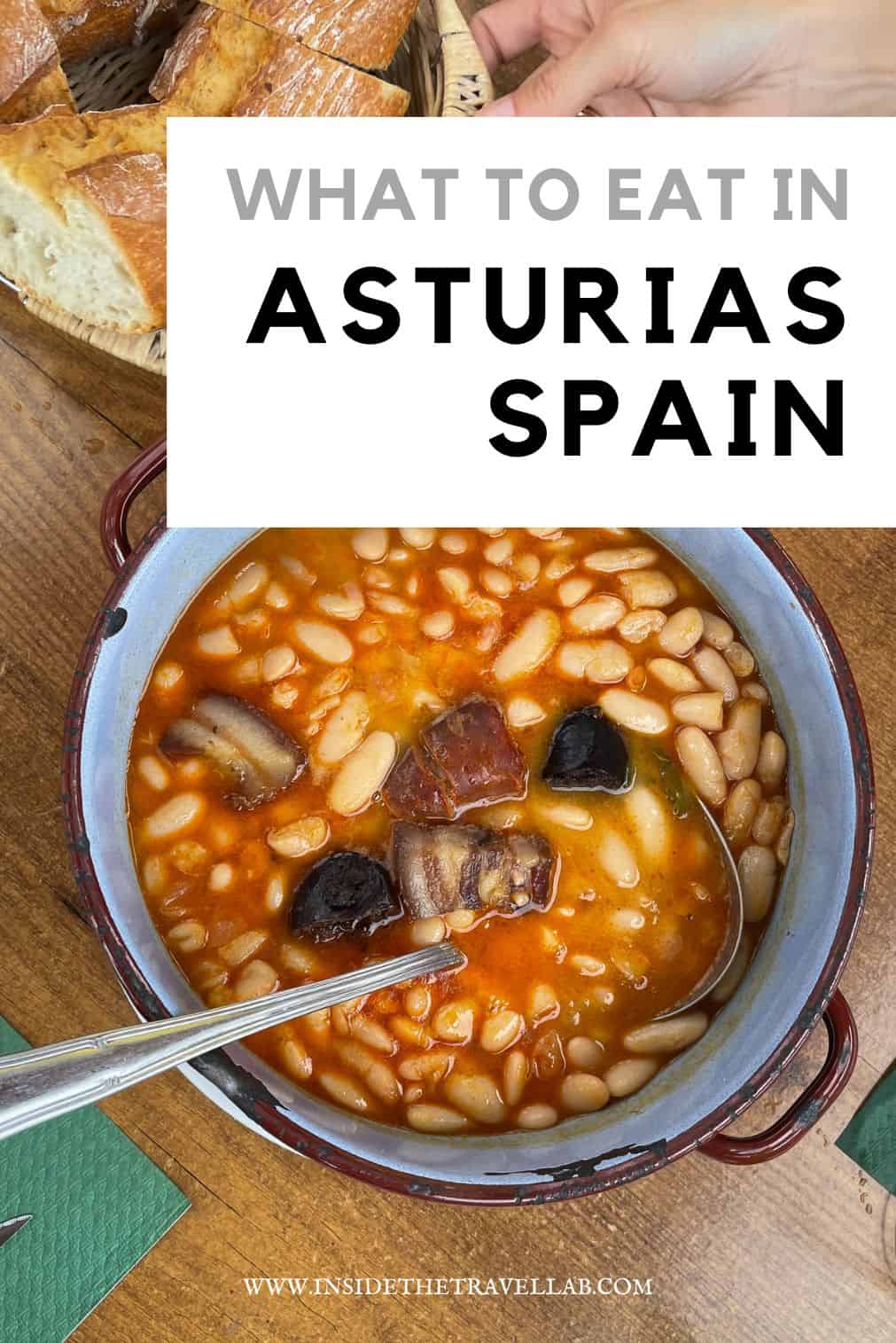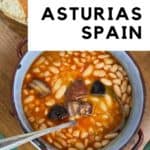Asturian cuisine pays homage to the forests, mountains and crashing coastline that define the region. The food is hearty, creative and homely. Here’s what you need to know about what to eat in Asturias, Spain.
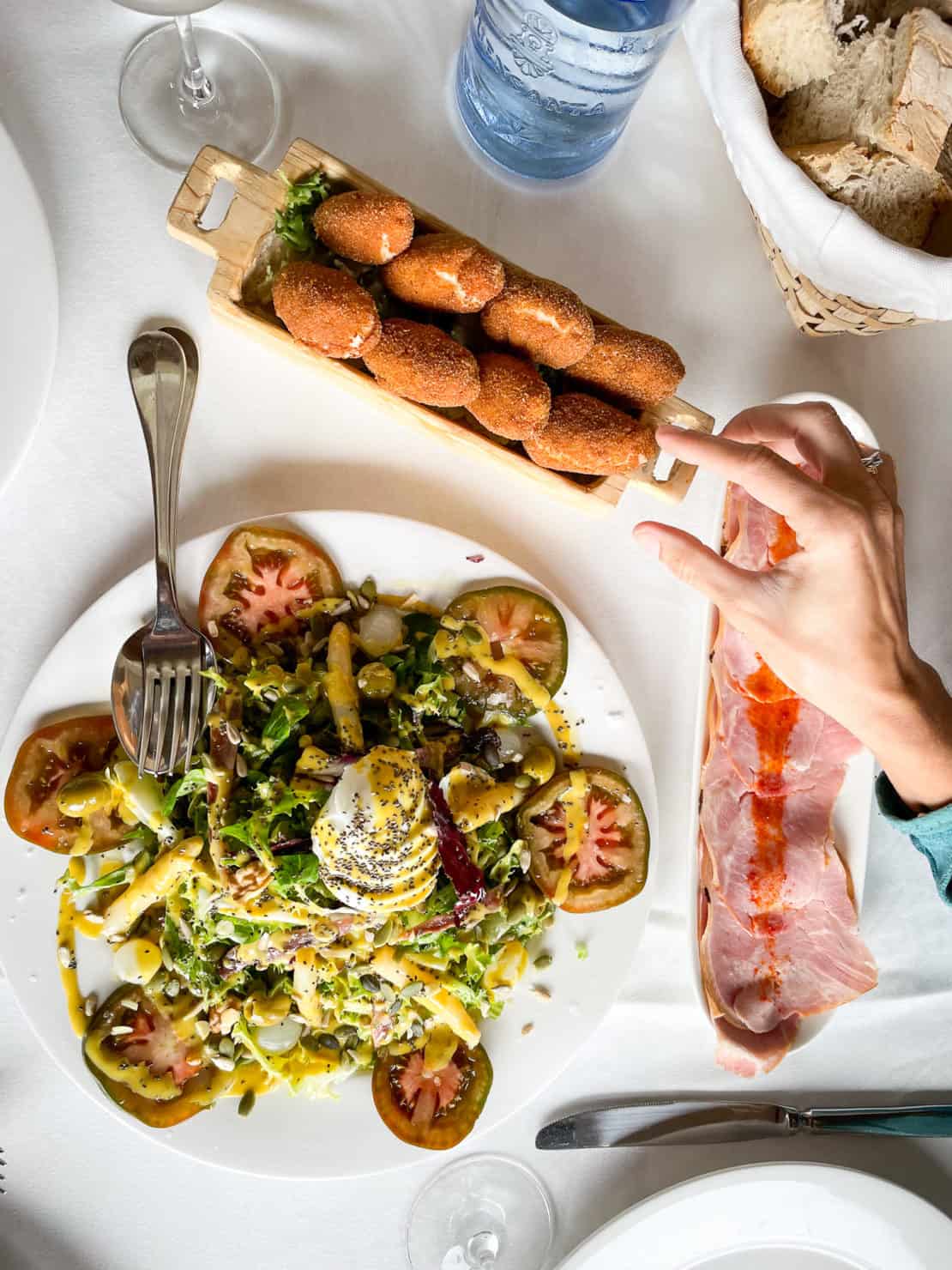
Disclosure: I last travelled to Asturias as part of a project called Green Spain. As ever, as always, I kept the right to write what I like (and eat what I want.) Otherwise, what is the point in life?
An introduction to Asturian Cuisine
Visiting Asturias allows you to reconnect with the trees, the mountains and the mysterious rhythms of the sea. It is a place to forget about the scrambled sound of the cities and instead to relax and explore some simpler pleasures. Like the good food that is found in traditional Asturian cuisine.
Every Spaniard knows that Asturian food is something special. It’s famous for being fresh, good for you and delicious. And it frequently comes served with cider poured from a great height.
So, when you are planning out your Asturian itinerary, don’t forget to factor in plenty of time to try these popular, traditional Asturian recipes.
Cider and forks at the ready. It’s going to be a culinary ride.
What is Green Spain?
The autonomous region of Asturias is part of the “Green Coast”, a name given to an area that includes Cantabria, Galicia, Asturias and the Basque Country.
Not only green by nature, it’s green by development, too, with an eye on sustainability and a dislike of mass resorts.
Traditional Asturian cuisine plays an important part in sustainable travel. Plus, it tastes good!
Where is Asturias
Asturias is an autonomous province in Northern Spain. It is crossed by the Picos de Europa National Park and includes vast areas filled with lush vegetation as well as small towns and picturesque fishing villages. Its capital is the city of Oviedo, but you’ll great food not only in the cities but across the countryside as well.
Food to try in Asturias
The natural scenery of Asturias means plenty of hiking and plenty of chances to work up an appetite.
Let’s start with the most famous dish…
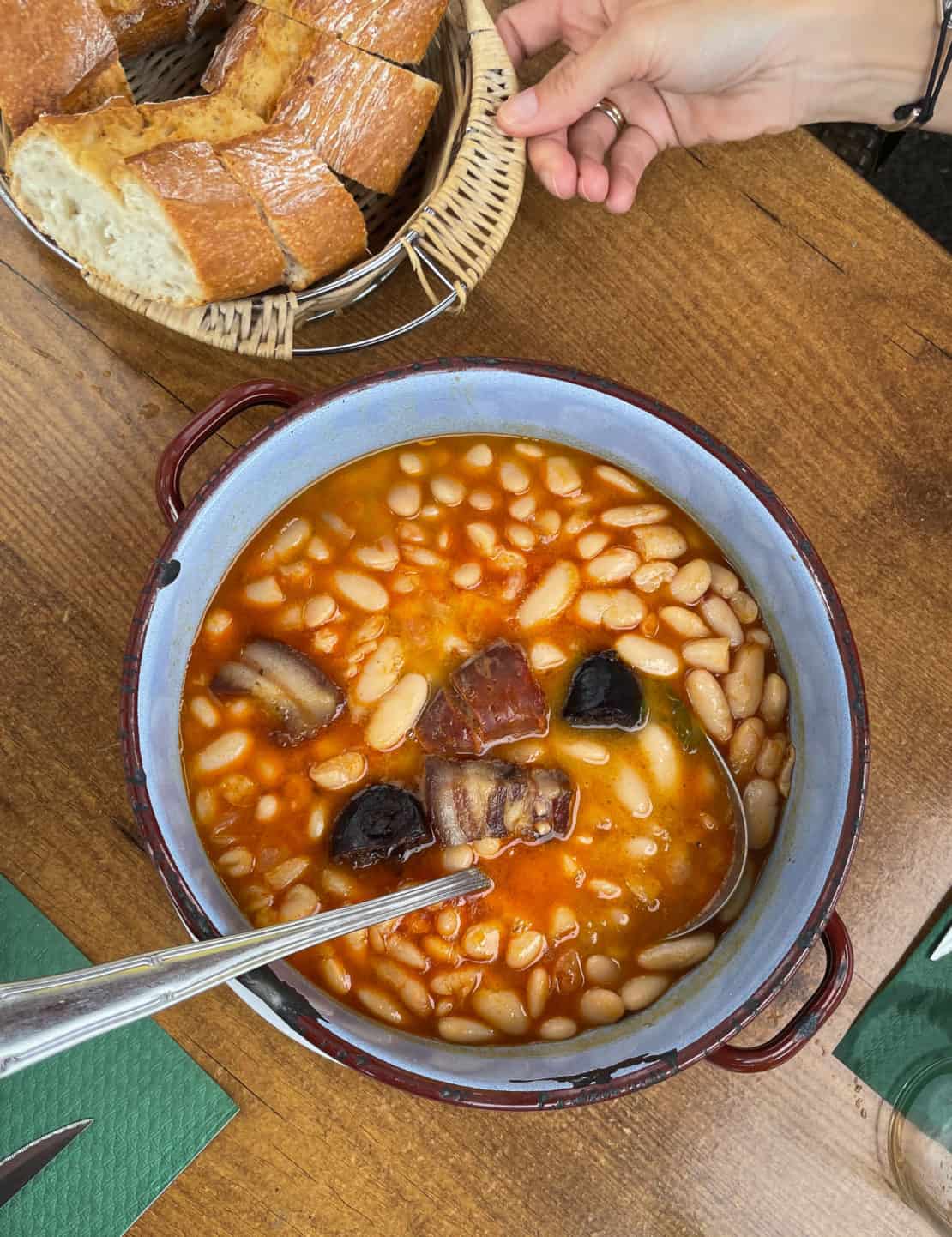
Fabada Asturiana
This dish, so simple and yet so thick, provides ultimate nourishment for every hungry tourist who’s been hiking in the Asturian mountains. The Fabada Asturiana, or Asturian bean stew, is thought to date back to the 19th century, if not before, when peasants needed something hearty.
The traditional recipe includes white beans, pork shoulder or lacón (some recipes use bacon or pancetta), morcilla (Spanish blood sausages), chorizo and assorted herbs. It can be served as a main course or as an appetiser with a glass of natural cider.
You can find canned Asturian fabada in supermarkets all over Spain, but if you want to get a taste of the real thing, head to one of the cider houses in Asturias and order a fresh portion from the menu.
Fabes con Almejas
The lighter variant of the traditional fabada, Fabes con Almejas, or Habas con Almejas, is based on the same recipe but made with clams instead of blood sausages and pork shoulder. The original recipe uses fresh clams and buttery white beans that were left to soak overnight. Fabes con Almejas is usually served with crusty bread and a glass of white wine.
Pote Asturiano
Still in the bean recipe area but spiced up a little, Pote Asturiano is made with pork shoulder, morcillas, chosco (cured meat specific to Asturias), chorizos, and one ham bone – this is on the meat side.
Then, Asturians add beans, potatoes, and fresh cabbage from their market gardens until they obtain a thick soup. This is ideal during the Asturian winter when the average temperature rarely rises above 10 degrees.
Fritos de Pixin (Fried Monkfish)
This is a very popular dish served all over the region because it is light and quick to make. Pixin is the name Asturians use for monkfish. They make filets from its tasty white meat, coat them in flour, and deep fry them. The result? The best bites you’ve ever tried. Fritos de Pixin is often served with lemon and green salad.
Since Asturians have the Cantabrian Sea at their feet, you will also find other fish species they like to deep fry, like conger eel or sea bass. They are all worth a try.
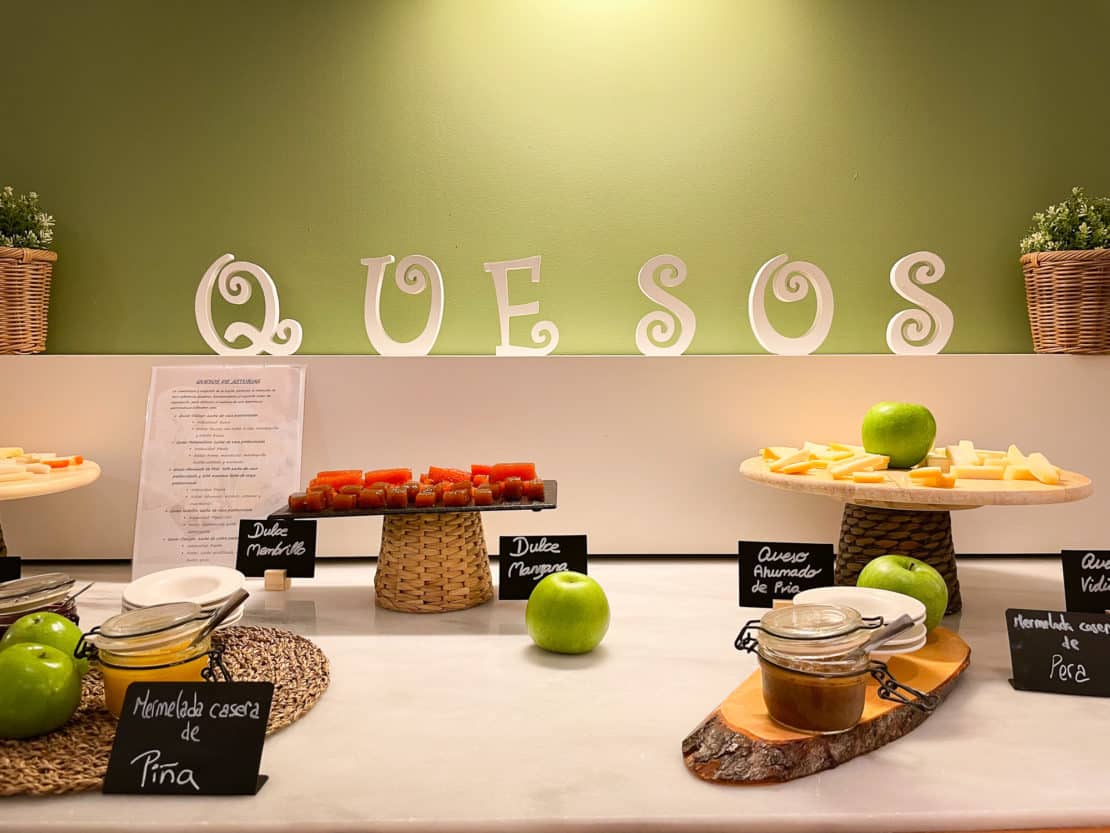
Asturian Cheese
The most famous cheese in the region is Cabrales cheese. Prepared at the foot of the Picos de Europa, this semi-hard, fatty blue cheese contains unpasteurised milk, usually cow’s milk, or sometimes blended with sheep or goat milk.
It is aged for up to four months and has a strong aroma that pairs well with dry sausages, grapes, figs, and red wine. One of the most famous local cheese brands is La Peral, made by cheesemakers Esther Alvarez and her husband, Jose Luis Lopez.
Pastel de Cabracho
The main ingredients of pastel de cabracho are fresh fish, prawns, and leeks. It almost sounds like a regular fish stew.
So why should you choose it? Pastel de Cabracho is made with scorpion fish, a rocky marine predator that also happens to be delicious. And it has high nutritional value.
Asturians cook it with shallots and eggs and turn everything into a paste. Then, they pour the paste into a mould and cook it in the oven to make a sort of roulade. There’s nothing tastier than a light appetiser like this one.
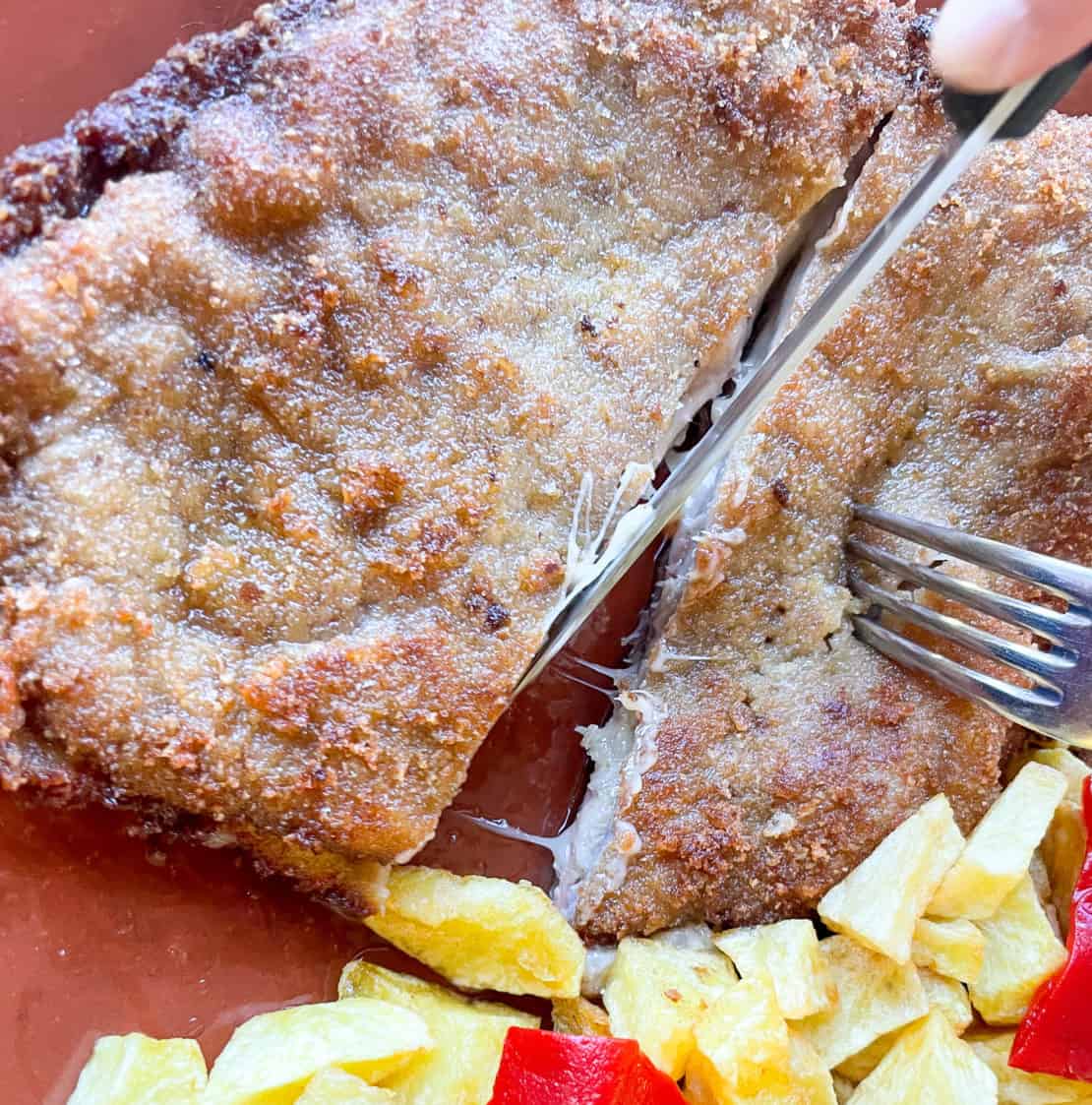
Cachopo Asturiano
Ah, now we come to the guilty pleasure of Asturian cuisine: cachopo. Imagine two veal fillets as the bread in a ham and cheese sandwich and you’re part way there. Fry the whole lot in egg and breadcrumbs so that the cheese melts and you’ve made it home. Fuel up even more by serving cachopo with chips and you can consider yourself a real Asturian man.
As my companion, Alejandra, would say: “in Asturias, we cannot serve a meal without potatoes.”
Pitu de Caleya
If you find yourself in a cider bar, or sidreria (and you will,) try Pitu de Caleya. And this is because Pitu de Caleya is perfection. The chicken is extremely tender once it has been slowly braised in a sauce made from olive oil, sherry, brandy, and lots of garlic. Most Asturian restaurants serve it with a rich rice side.
Black Pudding
Black pudding, also known as blood sausage, is not everybody’s cup of tea. This dish is mainly made with pig’s blood and fat.
Asturians spice it with paprika and then smoke it before adding it to their stews and soups. They also serve it on its own, fried and with a side of potatoes. Add a glass of Asturian cider, and you have yourself a dinner.
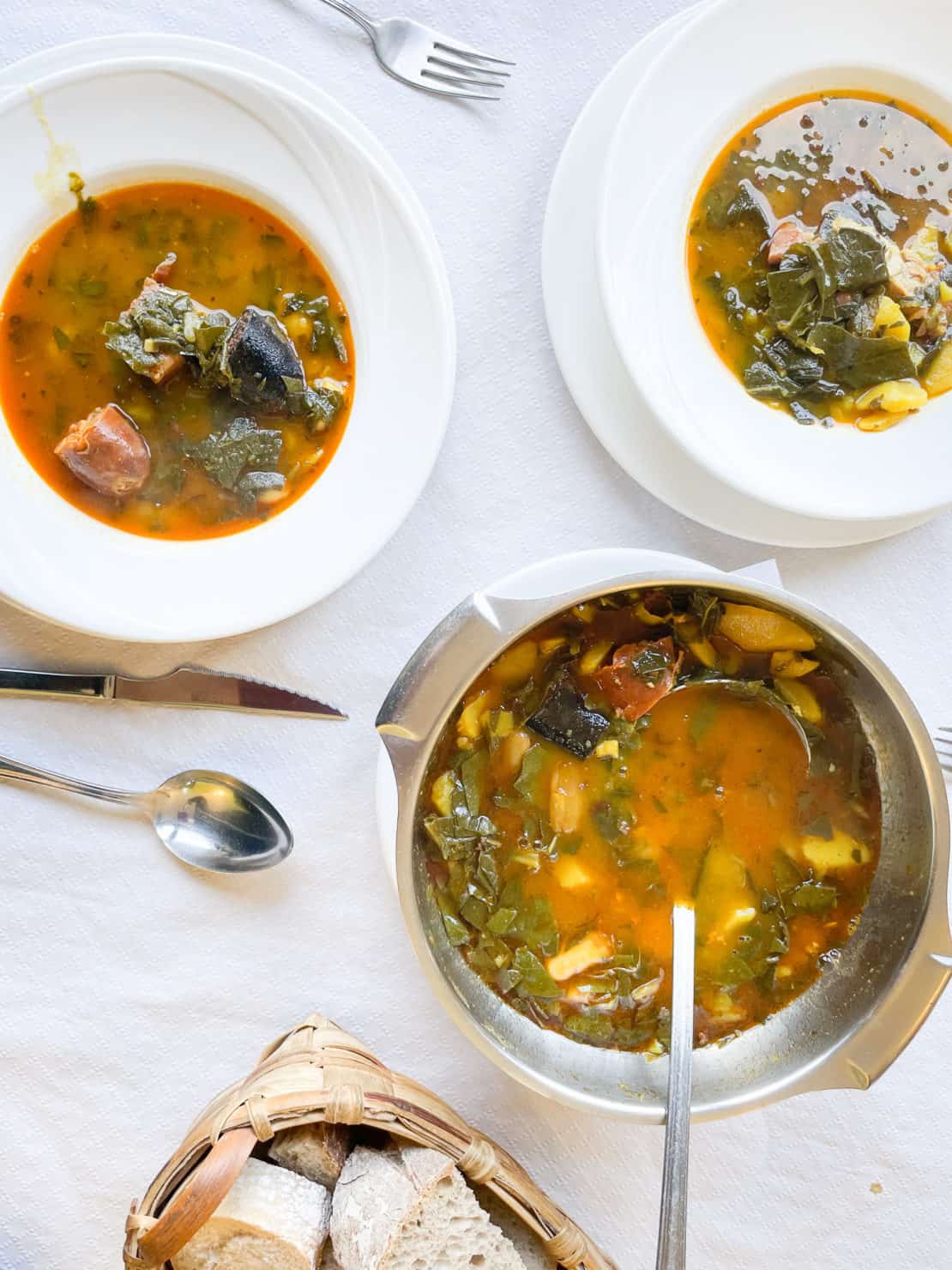
Caldereta
Often denigrated by the simple description of “fish stew,” an Asturian caldereta is a work of art. Prepared over hours in a giant pot, it includes prawns, fish, lobster if you have some, a tomato base, potatoes sometimes and white wine or cava from time to time. Each restaurant or grandmother has their own recipe and everyone sits at the table at the same time to ladle portions out, share with bread and potatoes and catch up with the day’s affairs. Sometimes, you’ll find meat in there as well.
Chosco
Meet chosco, the Asturian pork sausage seasoned with paprika, salt and garlic. It’s typically made from tongue and pork loin and cold smoked for a little over a week using chestnut wood, dry oak, birch and beech. It’s large and red and goes well in stews or on its own, paired with rich red Spanish wines like Rioja and Ribeira.
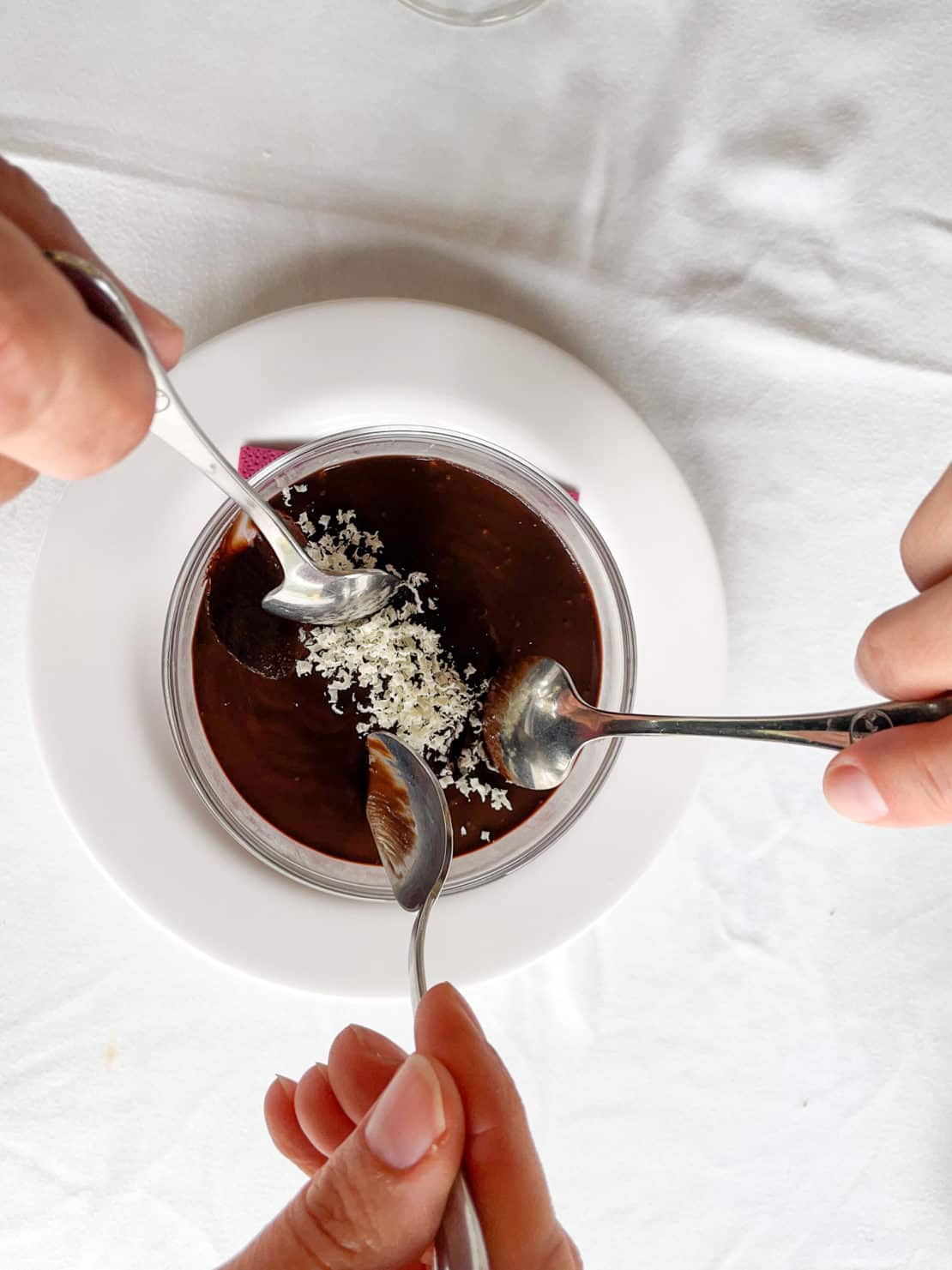
Sweet Dishes in Asturian Cuisine
A meal is never over until coffee has been served and everyone has considered dessert.
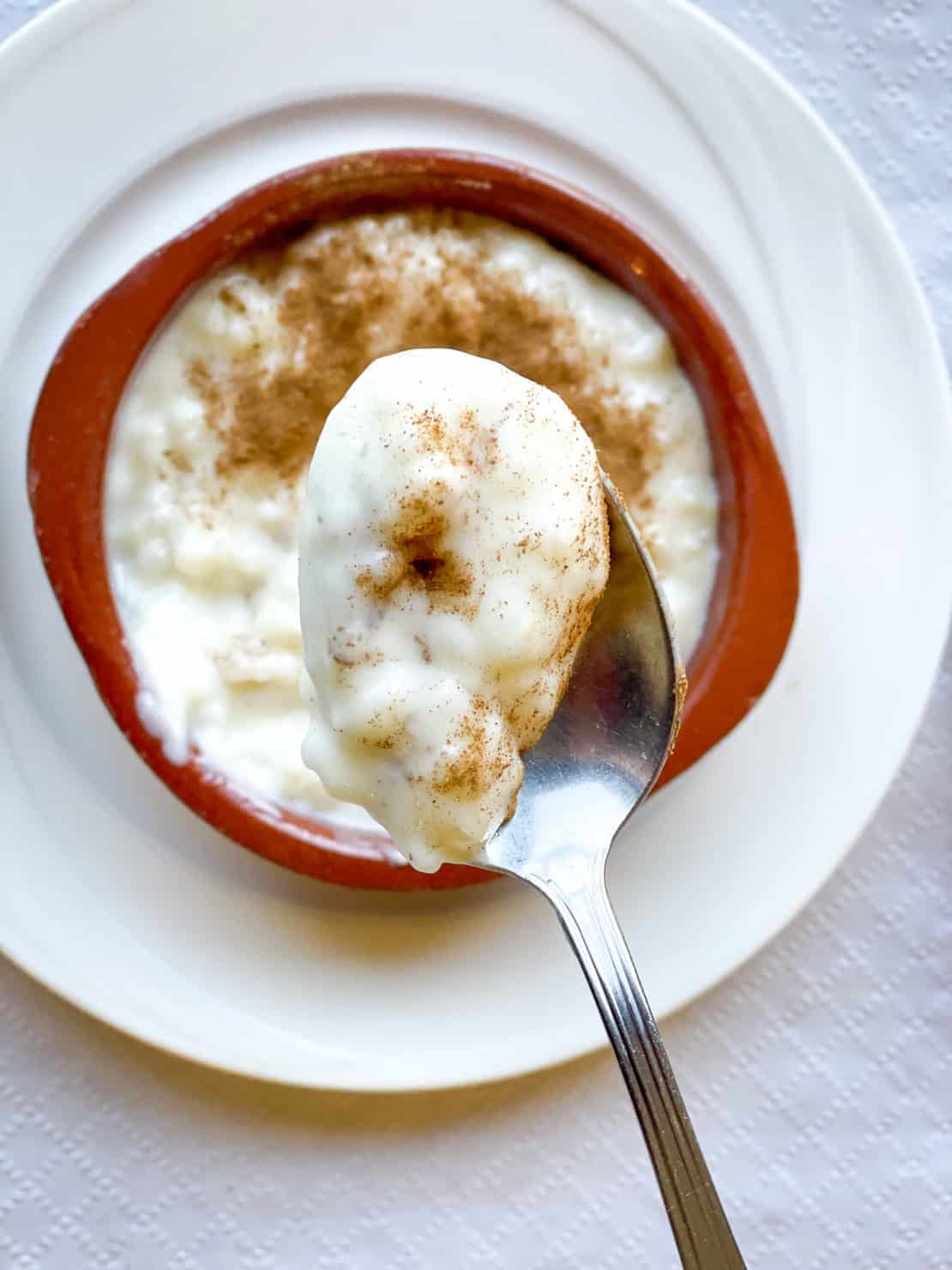
Arroz Con Leche
Welcome to the simple and gratifying Arroz con Leche. This rice pudding combines high-quality short-grain rice with whole milk and a twist of caramelised sugar and it’s a popular way to end a meal.
The dessert is also served in the rest of Spain and has a version in almost every country in the world. Yet, as every Asturian knows, the Asturian version is, by far, one of the best.
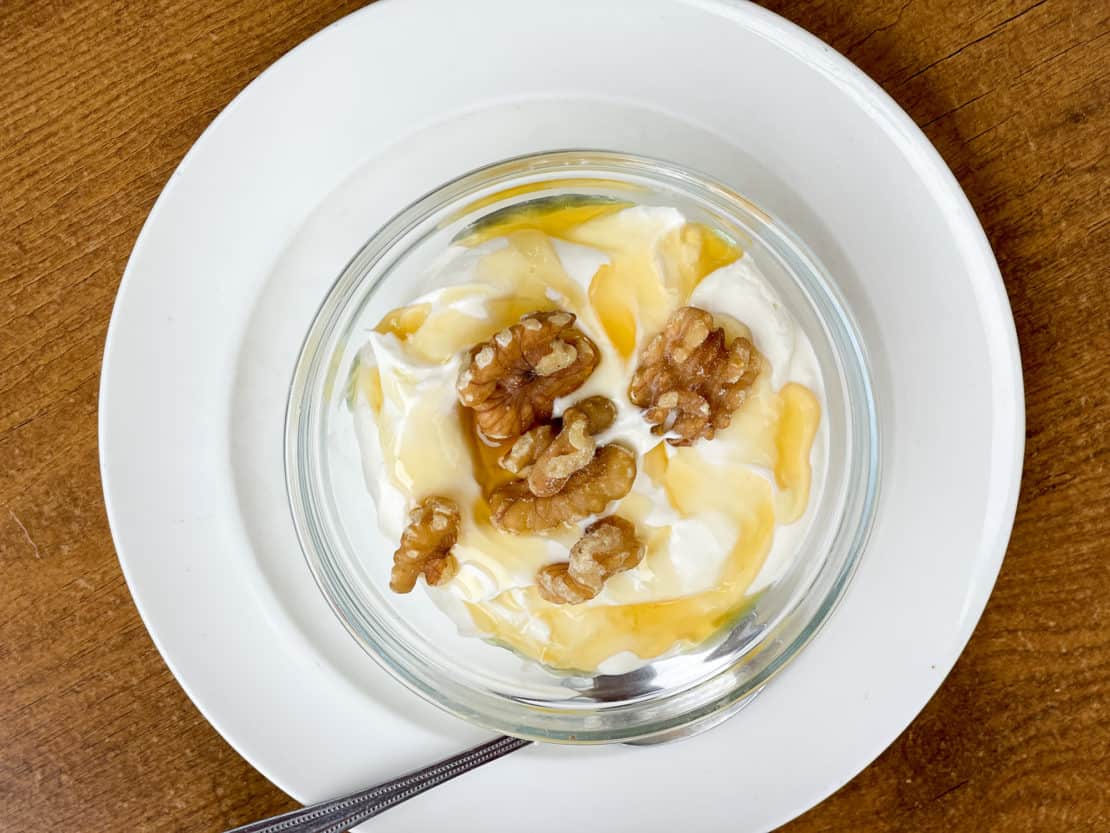
Requeson
Requeson is a white, crumbly cheese similar to ricotta and somewhere between the consistency of goat’s cheese and yoghurt. It’s often served with a slathering of honey and marks the grand finale of an Asturian meal.
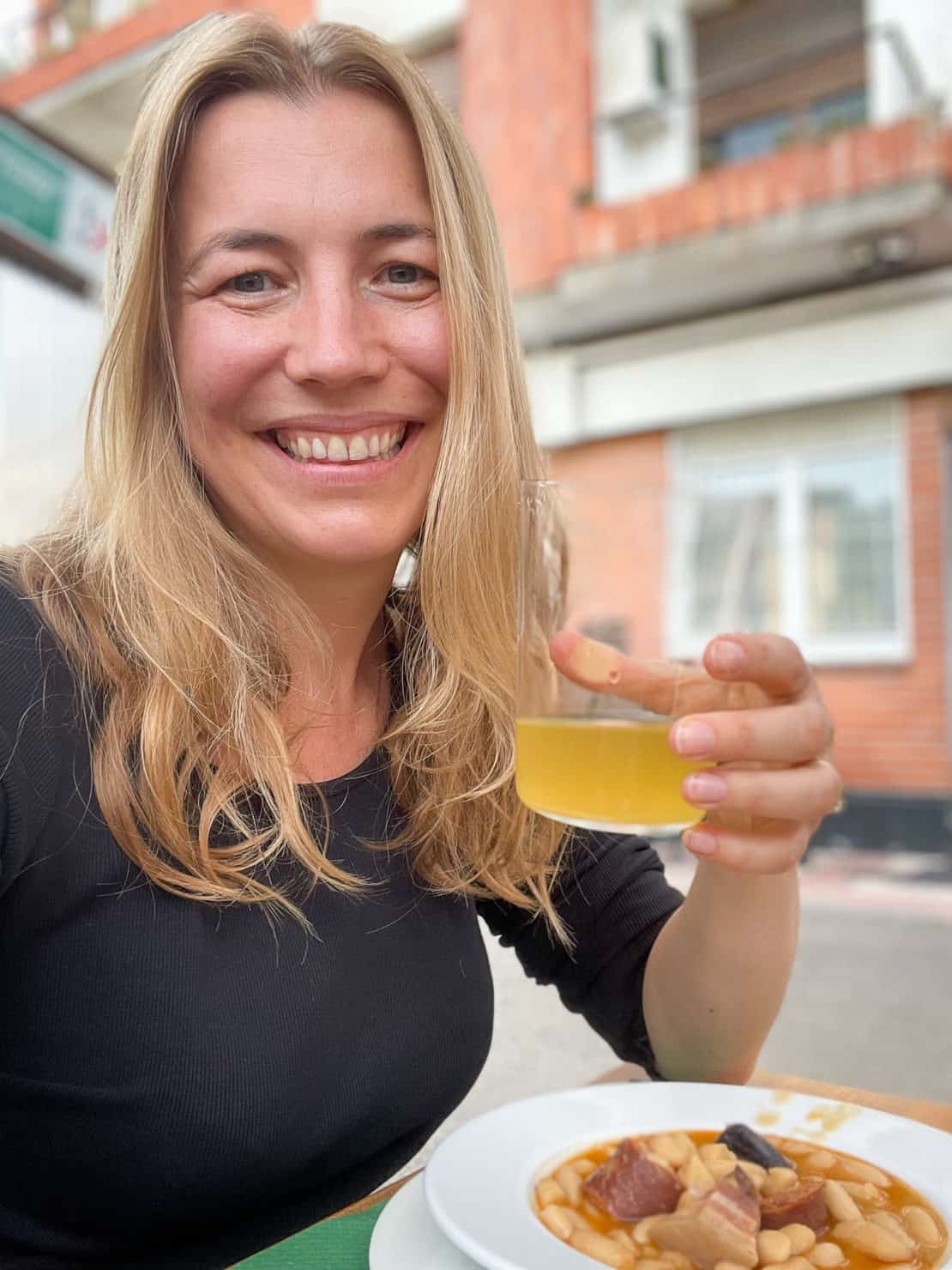
Restaurant recommendations for Asturias
- Casa Marcial in Arriondas – a fabulous Michelin starred restaurant where you can try plenty of traditional Asturian dishes but with a modern twist.
- Auga in Gijón – located on a lovely pier, Auga is renowned for impeccable service and the best Asturian Fabada in the region.
- Arbidel in Ribadesella – there’s always a big surprise waiting at this delightful restaurant run by chef Jaime Uz who sees himself as an artisan.
- La Palmera del Indiano in Oviedo – known for its Asturian cheese platter and relaxed vibe.
- El Pescador in Cudillero – a more traditional restaurant, perfect for trying fish-based Asturian recipes but other traditional dishes as well.
- El Gran Hotel Brillante in San Esteban – a great tasting menu served by the sea.
- Parador de Corias in Cangas del Narcea – serves only local produce in a stunning former convent.
- Hotel Las Caldas Villa Thermal – local food in a stunning, Hall of Mirrors style dining room inspired by Versailles.
- Vega Redonda Cider House in Cangas de Onis – traditional, hearty fare with la sidra poured as you watch.
- El Puente del Pilar – this family run restaurant in Ribadesella offers homemade food, lots of stories and a whole lot of fun.
